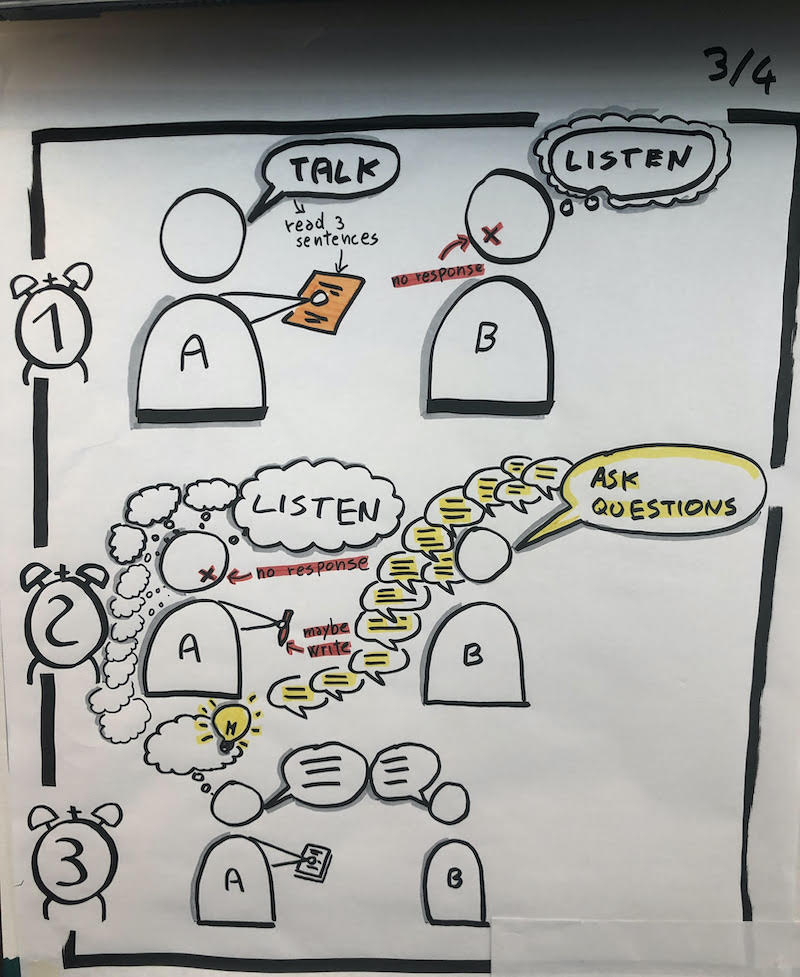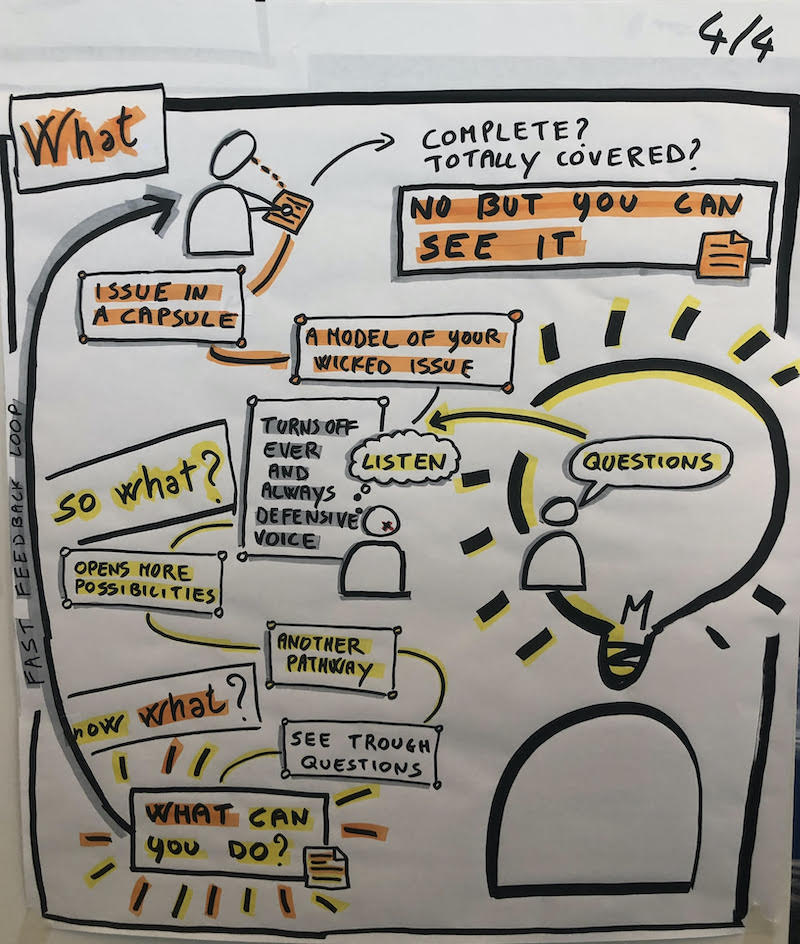Recently I was on a reoccurring call with Human System Dynamics (HSD) associates and friends where a volunteer shares a wicked issue they have and then listen to questions without answering. The questions are open ended, not disguised advice, beyond the knowledge of the asker.
I hope these questions will help you see a next step for your Agile Retrospective missing reflection.
Answers have short shelf lives in complex systems, and a good question can last a lifetime. -Glenda Eoyang
After that the person considers a next wise action that is within control, reasonable, promising, short term response.
The groups follows HSD simple rules:
- Stand in inquiry
- Turn judgment in to curiosity
- Turn conflict in to shared exploration
- Turn defensiveness into self-reflection
- Turn assumptions in to questions
- Search for true and useful
- Find the energy in difference
- Zoom in and zoom out
- Connect with stories and impacts
- Celebrate life
What is a wicked issue?
Here’s how HSD defines it:
- Many levels
- Many stakeholders
- Massive interdependencies
- Fuzzy boundaries
- Repeating but never exactly
- No root cause
- Cannot be solved, but can be influenced
Here are some graphics I created to explain the process in a micro talk I gave:


My wicked issue
Retrospectives are times to reflect with your team. You can use Adaptive Action, but many people jump from WHAT to NOW WHAT. They miss the time of reflection.
The questions I received
- GE : What does time have to do with it?
- JK: What kind of false time lines do we put on ourselves and our teams?
- GE : What if you started with the SO WHAT and left out the WHAT and NOW WHAT once?
- RH: Where else do you see that lack of reflection
- GE : How many different tools and models exist to support SO WHAT?
- GE : What do feelings have to do with it?
- BMC : Are there other spaces or processes where the team is capable of doing reflection? What’s different?
- JJ : If you can apply only ONE simple rule (HSD) to trigger off the introspection, what would it be?
- SB : Building on MKS.is there judgment usually at play?
- RH: What kinds of invitation do you have and how do people know what to reflect on?
- GE : Are there some people who are better at SO WHAT than others are?
- BMC : Are they aware that they are skipping the step?
- SB : where might they do so what elsewhere?
- JK: How does our current educational system teach and promote reflection?
- LP : What pattern(s) are these reflection times intended to generate?
- EMN : Have you worked with a team that does reflection intuitively and what is different about that team?
- RH: Is engaging in retrospective a finite game or an infinite game?
- MKS : What is your So What on the teams not doing a So What?
- JJ : What is the “fear” behind the skipping Reflection?
- SB : What’s the normative truth about the so what?
- GE : How is the retrospective about individual and how about team performance?
- JJ : Is time/urgency more important than quality?
- GE : How would a retrospective work if it were totally in inquiry?
- RH: How do your team members understand or use the inquiry practices?
- SB : what do they really want to know?
- EMN : Are there any fun games that require reflection?
- GE : What would a prospective look like?
- RH: How would we turn some of the models and methods into games?
- MKS : Would the team even do a retrospective, if given the choice?
- GE : What would happen if you took this wicked issue to the group?
- GE : What does it have to do with learning?
- LP : What role do questions play in a retrospective?
- RH: What’s the difference between an invitation and a “rule”?
- GE : Who wins the retrospective game?
- GE : Where besides Agile world does this issue happen?
- SB : What are the simple rules that govern how the retrospective is done now?
I enjoyed this session, it was comforting hearing similar questions to the ones I am asking and the different ones that I didn’t explore yet.
Those questions aren’t “disguised advice” but tokens to get to a deeper insight.
After that there was a conversation with many interesting exchanged, somebody raised a good point about the downside of too much reflection. That made me realize how some people have been burned–or are concerned–by analysis-paralysis and might be leaning towards action/reaction. That’s why I find the adaptive action cycle step “Now what?” such a natural and important one.
Now what?
The question that stuck most for me was “why do you care about this?”. It took me a little to reply and the answer is I want to leave the world in a better place than I’ve found it, and fostering reflection is for me a way to do that.
Clearing out why I care gave me more energy in making Agile Retrospectives the tool they’re meant to be and not just a checkbox.
How did those questions resonate with you? Do they inspire you to a wise next step on your Agile Retrospectives that are lacking reflection? Do they make you see your current issue differently?